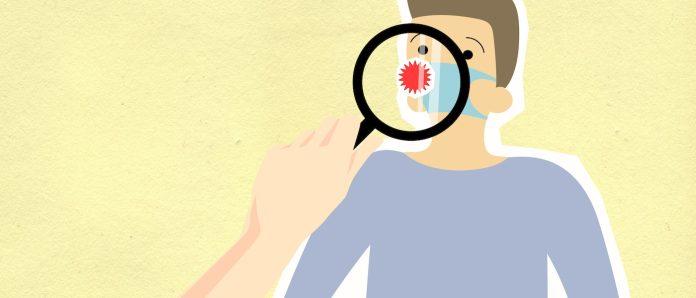The number of people with respiratory infections has been on the rise in recent times. Two to five times a year we are attacked by it: sniffling, coughing, pain in the throat. Basically, a respiratory infection. Sniffling and coughing are often the first warning signs of a cold.
What is a Respiratory Infection?
A respiratory infection is an infection of the mucous membranes in the airways caused by viruses or bacteria. The air we breathe contains invisible pathogens. If such a microbe settles in the mucous membrane, an infection can develop.
Upper respiratory tract vs. lower respiratory tract
Both the upper and lower airways can become inflamed.
An inflammation of the upper airway is caused by viruses and passes on its own. Examples include: colds, laryngitis and sinusitis. An upper respiratory tract infection can progress to a lower respiratory tract infection.
Inflammation of the lower respiratory tract can be caused by either a virus or bacteria and can lead to serious conditions, such as bronchitis and pneumonia. Treatment is often necessary.
Symptoms of RTI
Again, the symptoms of upper and lower respiratory tract infections differ.
Symptoms of an upper respiratory tract infection:
- Cough
- A sore throat
- Hoarseness
- Runny or stuffy nose
- Pain in the nasal sinuses
- To sneeze
- Headache
- Tearing eyes
- Earache
- Fever
Symptoms of a lower respiratory tract infection:
- Pain in chest
- A sore throat
- Headache
- Fever
- Coughing up mucus (possibly with blood)
- Feeling of illness and fatigue
Distinction Between Infections in Upper and Lower Respiratory Tract
A distinction is made between infections in the upper and lower respiratory tract. Upper respiratory infections, such as the
common cold and strep throat, are usually caused by a virus and almost always go away without treatment. Lower respiratory tract infections can be caused by either a virus or bacteria. Pneumonia and bronchitis are examples of this. Respiratory infections of the lower respiratory tract can lead to serious illness. For example, pneumonia is a major cause of illness and death. Community AcquiredInfections (that is, infections acquired outside the hospital setting) are the most common causes of pneumonia. It is estimated that this type of pneumonia is responsible for about 4 million deaths worldwide each year.
We can distinguish between bacterial and viral respiratory infections.
Bacterial infections
Bacteria are single-celled microorganisms without a cell nucleus. There are many types of bacteria that are present in various places in the body (such as in the intestines), where they fulfill an important function in, among other things, metabolism, these bacteria are collectively called the microbiota. However, there are also harmful bacteria that infect the body and cause disease. Under the right conditions, both these pathogenic bacteria and the microbiota can multiply rapidly and cause disease. Bacteria enter the body by attaching to so-called ‘host cells’ with which they enter a cell. Subsequently, harmful substances called toxins are excreted by the bacteria. These toxins can make people feel sick. Infections cause by bacteria can be treate with antibiotics.
Read More: Healthcare Facility Management : Opportunities and Challenges in a Rapidly Evolving Industry
Viral infections
Infections can also be cause by viruses. A virus actually only consists of genetic material with a protein shell. A virus cannot reproduce on its own and needs a host cell to which it attaches and invades. Once inside a host cell, the virus begins to multiply. New virus particles are release and can infect new host cells. There are many types of viruses. For example, there are retro, herpes and coronaviruses. Some viruses cause relatively mild illnesses, such as the common cold, cold sores, or the flu. But they can also cause serious illnesses such as pneumonia, HIV, SARS, hepatitis or COVID-19. Viral infections cannot be treat with antibiotics. Virus infections are mainly prevent by vaccination. Through the national vaccination program, babies are vaccinate against mumps, polio, whooping cough and hepatitis B, so that they are protect against these diseases throughout their lives.
When to contact a doctor?
That depends from person to person. Some are more at risk than others. Just think of people over the age of 75, people with reduced resistance and patients who have already had such an infection. These people should visit a doctor at the first symptoms. Even healthy people should visit if they are short of breath, have a high fever (38°-38.5°) and give up a lot of mucus (with blood) or if the infection lasts longer than two weeks.
Do you have symptoms and are you a high-risk patient? Speak to a doctor through the Doktr app and get medical advice in a safe and easy way.
